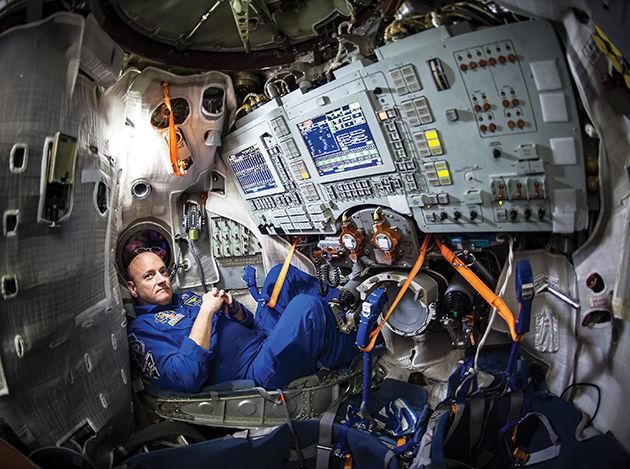Spaceflight is dangerous, but the record for longest time spent in orbit continues to be broken.
Early Thursday morning at 12:05 a.m. Eastern Time, Scott Kelly, an American astronaut currently aboard the International Space Station, broke the previous American record of 215 consecutive days in orbit. The record was set back in 2006 by Michael Lopez-Alegria.
Kelly is several months into NASA’s “Year in Space” experiment, where he will spend a continuous year in orbit to give NASA the chance to study how long-term space travel affects the human body.
Natalie Cluck, computer science sophomore and publicity director for A&M’s chapter of Students for the Exploration and Development of Space, said Kelly’s record-breaker is a big milestone for the U.S. space program.
“Scott Kelly is going to set the U.S. records for the longest single mission and the longest cumulative time spent in space,” Cluck said.
Kelly’s mission is significant for several reasons, but likely the most impressive is that his mission will last for a full year, which will approach twice as long as the previous record.
This is not Kelly’s first time to break a record. Earlier this month, Kelly became the American astronaut who has spent the most cumulative time in space, breaking the record of 382 days. By the end of his mission Kelly will expand that record for total time spent in space at 522 days.
“It is equivalent to any other milestone we have achieved in space like when Alan Shepard was the first American to go to space,” Cluck said. “We can see that we are making progress in the space exploration industry.”
Kyle Brookover, aerospace engineering junior and vice president of A&M’s chapter of the American Institute of Aeronautics and Astronautics, said Kelly’s mission is unique because it is so long compared to others.
“Most missions with the ISS are usually around 6 months, his mission is going to be a full year,” Brookover said.
The duration of space missions is limited based on a variety of factors, but the main one being taken into account is the physical toll of space exposure on the astronauts. Brookover said the time astronauts are in space is generally minimized, but NASA also wants them to be in space long enough to conduct meaningful experiments. Because the astronauts are not weighted by gravity their bones and muscles can lose mass quite easily.
“They are mandated to do two hours of physical exercise every 24 hours, but they still have deterioration,” Brookover said.
Another serious problem that can occur is weakened vision.
“Changes in intracranial pressure can negatively affect the eyesight of astronauts that have been exposed to microgravity for long periods of time,” Cluck said.
Astronauts in space are also exposed to significant amounts of radiation that Earth’s atmosphere would normally protect them from.
The effects of living in space are tough, but Kelly’s mission will give NASA a better understanding of how to avoid them — an important step before any manned missions beyond low Earth orbit are again attempted.
“It is really the first concrete step towards exploring space,” Brookover said. “Space is really vast, so it’s going to take a long time to get where you want to go.”
Brookover said the estimated time to reach Mars is nine months, not considering the time on Mars or the return voyage.
Cluck said this mission is a great step towards reaching Mars one day.
“We can only go further from here,” Cluck said.
Astronaut’s space flight time breaks U.S. record
October 29, 2015
Photo by Provided
Astronaut Story
Donate to The Battalion
Your donation will support the student journalists of Texas A&M University - College Station. Your contribution will allow us to purchase equipment and cover our annual website hosting costs.























